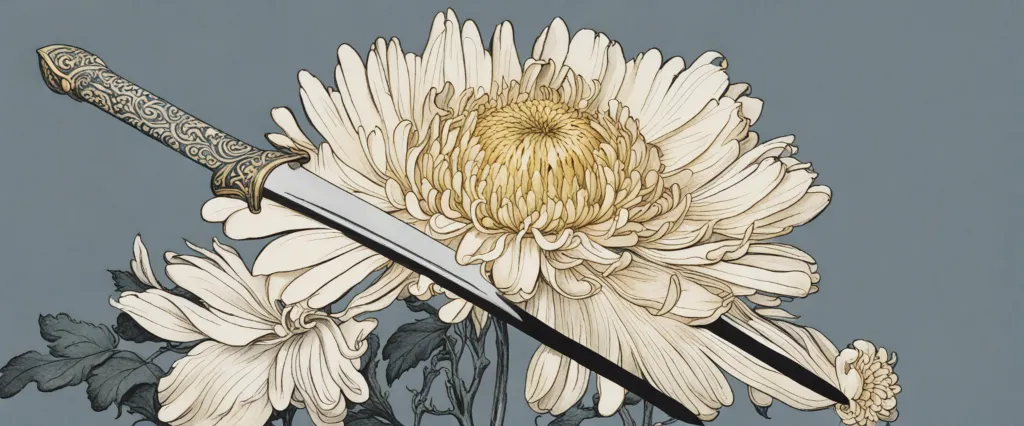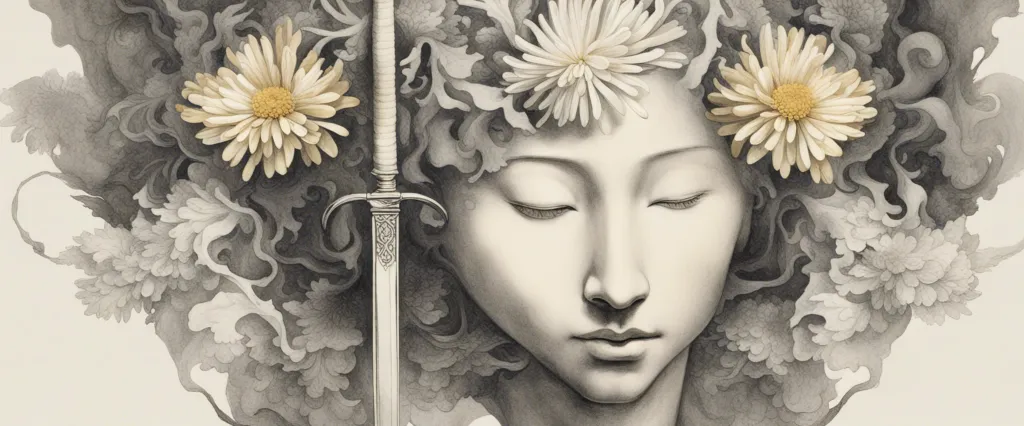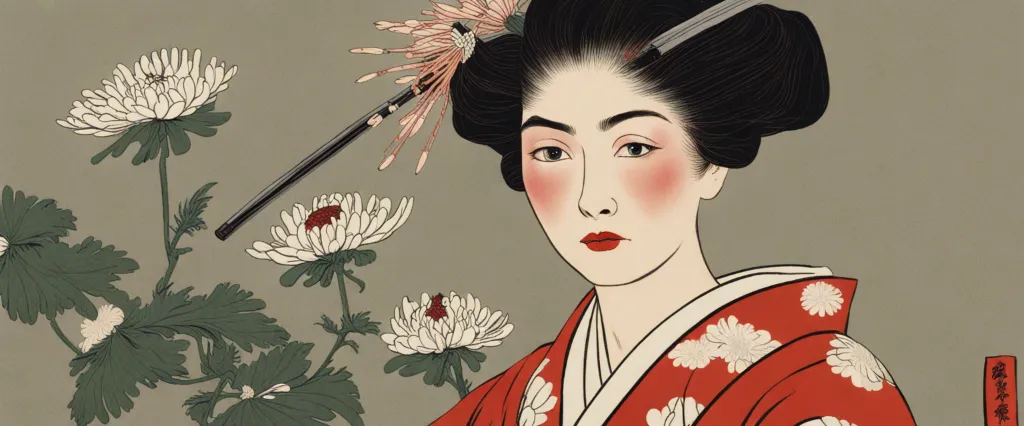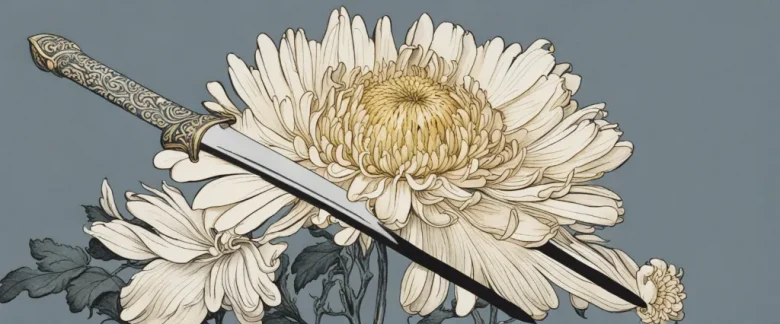
In “The Chrysanthemum and the Sword,” Ruth Benedict explores the fascinating culture of Japan in an attempt to demystify the nation for her fellow Americans during World War II. Published in 1946, this groundbreaking anthropological study presents a comprehensive analysis of Japan’s social, psychological, and cultural dimensions. Ruth Benedict, an influential American anthropologist, was known for her profound understanding of cultural diversity and her ability to shed light on various societies. Through her meticulous research and insightful observations, she offers readers a profound examination of Japan’s values, traditions, and the complex interplay between its ancient past and rapid modernization.
Chapter 1: Introduction to Japanese Culture
Chapter 1 of “The Chrysanthemum and the Sword” by Ruth Benedict serves as an introduction to Japanese culture. The chapter begins by emphasizing the distinct cultural differences between Japan and the Western world. Benedict highlights that Japan’s feudal past, isolated geography, and unique traditions shaped their culture into one that is both enigmatic and intriguing.
The chapter delves into Japan’s historical background, starting with the emperor system and its religious significance, particularly Shintoism. Benedict explains how Shinto beliefs, centered on nature and ancestor worship, influenced the Japanese people’s worldview.
She explores the role of Buddhism in Japanese society, emphasizing the fusion of Shinto and Buddhist practices. Benedict describes the rituals and ceremonies associated with these religions, asserting that they provide a framework for Japanese life and morality.
The author also examines the complex interplay between collectivism and individualism in Japanese culture. She highlights the concept of wa, which represents social harmony and conformity, as well as the interdependence between individuals and the larger society. Benedict contrasts this with the Western value of individualism, emphasizing how Japan’s collectivist culture differs in its emphasis on cooperation and group identity.
Furthermore, Benedict delves into various facets of Japanese society, such as the importance of education, art, and aesthetic sensitivity. She discusses the renowned crafts, like pottery and gardening, which reflect Japan’s appreciation for simplicity and nature’s beauty.
Overall, Chapter 1 aims to provide a comprehensive overview of Japanese culture, emphasizing its uniqueness and distinctiveness from Western culture. Benedict lays the foundation for further exploration into the complexities and contradictions that make up Japanese society.
Chapter 2: The Japanese Mind: Self and Society
In Chapter 2 of “The Chrysanthemum and the Sword” by Ruth Benedict, titled “The Japanese Mind: Self and Society,” the author explores the cultural and psychological characteristics that shape the Japanese society. She begins by discussing the Japanese concept of self, which is deeply rooted in the notion of “amae” – a sense of dependency and belongingness. According to Benedict, the Japanese see themselves as interdependent beings, constantly seeking harmony within their social groups.
Benedict elucidates the Japanese attitudes towards individuality and collectivism, highlighting the emphasis placed on group cohesion and the importance of social roles and hierarchy. The Japanese mindset prioritizes the needs and harmony of the group over individual desires, which is a significant departure from Western ideologies that celebrate individualism and personal achievement.
Furthermore, Benedict explores the Japanese sense of shame and the fear of standing out, contrasting it with the Western value of pride and self-confidence. She argues that this cultural distinction is reflected in various aspects of Japanese society, such as the importance of conformity and the concern for maintaining social order.
The chapter also delves into the Japanese attitude towards nature and the collective understanding of beauty. Benedict emphasizes the balance and simplicity that characterize Japanese aesthetics, highlighting the appreciation for nature, asymmetry, and imperfection.
In summary, Chapter 2 of “The Chrysanthemum and the Sword” provides an in-depth analysis of the Japanese concept of self, their collectivist mindset, attitudes towards shame and conformity, as well as their appreciation for nature and beauty. Benedict’s exploration sheds light on the cultural values and beliefs that significantly shape Japanese society.
Chapter 3: The Samurai and the Warrior Code
In Chapter 3 of “The Chrysanthemum and the Sword” by Ruth Benedict, titled “The Samurai and the Warrior Code,” the author delves into the historical and cultural significance of the samurai and their code of conduct – the Bushido.
Benedict begins by exploring the emergence of the samurai class in Japan, discussing how they evolved from being local warrior bands to being appointed retainers of the imperial court. She highlights how the samurai became guardians of social order and enforced the military and ethical code known as Bushido. The Bushido, literally meaning “Way of the Warrior,” emphasized loyalty, honor, courage, and death over surrender.
Benedict emphasizes the paradoxical nature of the samurai’s code. While it emphasized bravery and a strict moral code, it also required ruthless discipline and self-control. The author notes that the Bushido advocated for death as a preferable outcome to defeat and surrender. Benedict frames this as a reflection of the Japanese cultural context, where public shame and disgrace were often considered worse than death.
Furthermore, Benedict explains how the samurai’s values were deeply rooted in Confucianism. She explores the influence of Confucian teachings on the hierarchical structure of Japanese society and the emphasis on filial piety and obedience. Benedict argues that these values extended to the Bushido, shaping the samurai’s behaviors in their professional and personal lives.
The chapter also addresses the consequences and legacy of the samurai code in modern Japan. Benedict highlights how the code’s dedication to hierarchy and order impacted the country’s readiness to engage in warfare and its reluctance to accept democratic ideals. She concludes that while the samurai class no longer exists, the traces of the Bushido can still be found in various aspects of contemporary Japanese culture.
Overall, Chapter 3 of “The Chrysanthemum and the Sword” provides a comprehensive overview of the samurai class in Japan, delving into their history, cultural values, and the lasting impact of the Bushido code.
Chapter 4: The Role of Women in Japanese Society

Chapter 4 of “The Chrysanthemum and the Sword” by Ruth Benedict examines the role of women in Japanese society. Benedict delves into the traditional expectations and social norms imposed on women, as well as the changes brought about by modernization.
Traditionally in Japanese society, women were expected to be subservient to men and fulfill domestic roles. Their primary purpose was to support their husbands and raise children. Women were generally excluded from public life and were discouraged from seeking higher education or pursuing careers. Benedict illustrates how these gender roles were deeply ingrained in society, reinforced by cultural practices such as arranged marriages and the inheritance of property by males.
However, the chapter also explores the impact of modernization on women, opening up new opportunities and challenges. Benedict discusses how the influx of Western ideas and the rise of industrialization created new social and economic roles for women. As a result, some women began to challenge traditional gender norms, striving for education, work, and independence.
Although progress was made towards women’s equality during the 1920s and 1930s, particularly in urban areas, Benedict points out that societal expectations continued to hinder true gender equality. Women who pursued careers often faced discrimination and were expected to leave their jobs upon marriage or childbirth.
In summary, Chapter 4 of “The Chrysanthemum and the Sword” highlights the traditional and evolving roles of women in Japanese society. Benedict illustrates how women were traditionally confined to domestic spheres, yet the influence of modernization and Western ideals provided opportunities for greater gender equality, albeit with continued societal challenges and expectations.
Chapter 5: Rituals and Etiquette in Japanese Culture
Chapter 5 of “The Chrysanthemum and the Sword” by Ruth Benedict explores the significance of rituals and etiquette in Japanese culture. Benedict delves into the depth and intricacy of these customs, highlighting their importance in the daily lives of the Japanese people.
The chapter begins with an examination of the concept of ritual purity, which plays a fundamental role in Japanese society. Benedict explains that purity is not only physical but also spiritual, with individuals striving to maintain a harmonious balance in both aspects. This is achieved through various rituals, such as purification ceremonies performed at Shinto shrines.
Next, Benedict explores the idea of etiquette as an essential part of Japanese culture. Manners and proper behavior are deeply ingrained in Japanese society, and individuals are expected to adhere to strict societal norms. Benedict describes how the complex rules of etiquette affect various aspects of life, from formal greetings and gift-giving to the intricate tea ceremony.
The author also discusses the importance of self-restraint and self-control when it comes to emotions and personal expressions. Japanese society values the ability to maintain composure and harmony, which is achieved through the practice of tatemae, presenting a socially acceptable face to the world, and honne, the individual’s true feelings.
Furthermore, Benedict explores the role of rituals and etiquette in reinforcing social hierarchies and maintaining social order. Proper conduct is closely linked to one’s status and position within society, and individuals are expected to adhere to their respective roles. Benedict delves into the concept of kata, which refers to the set patterns and forms that guide behavior in various social contexts.
Overall, Chapter 5 presents a comprehensive overview of the significance of rituals and etiquette in Japanese culture. Through an in-depth analysis, Benedict demonstrates how these customs shape and govern various aspects of social and personal life in Japan.
Chapter 6: The Importance of Group Harmony
Chapter 6 of “The Chrysanthemum and the Sword” by Ruth Benedict, titled “The Importance of Group Harmony,” explores the Japanese concept of wa, emphasizing the significance of harmony and cooperation within Japanese society. Benedict delves into the cultural background of Japan, highlighting aspects such as their strong collective mindset, hierarchical social structure, and Confucian teachings that have shaped the Japanese understanding of wa.
The chapter begins by describing how the Japanese prioritize group cohesion over individual needs or desires. Individuals are expected to conform to societal norms and work towards maintaining harmony in their relationships. This harmony is vital within families, schools, workplaces, and the entire nation.
Benedict tackles the importance of hierarchy in Japanese society. The notion of wa is closely related to the strict adherence to social roles and respect for authority. Each individual is expected to understand their place within society and to fulfill their roles diligently, contributing to the overall harmony. The hierarchical structure is reinforced by Confucianism, which emphasizes respect for authority figures, filial piety, and the maintenance of harmonious relationships.
Furthermore, Benedict explores how the Japanese value indirect communication and non-verbal cues in order to preserve harmony. They tend to avoid confrontation and value subtle forms of communication to smooth over potentially tense situations. Additionally, they maintain a strong sense of loyalty and obligation towards their in-groups, seeking consensus rather than individual opinions.
In summary, Chapter 6 of “The Chrysanthemum and the Sword” illuminates the Japanese concept of wa and highlights its significance in maintaining group harmony. The collective mindset, hierarchical structure, Confucian teachings, indirect communication, and loyalty within Japanese society all contribute to the understanding and importance of wa.
Chapter 7: The Influence of Shinto and Buddhism
Chapter 7 of “The Chrysanthemum and the Sword” by Ruth Benedict explores the influence of Shinto and Buddhism in Japanese society. Benedict starts by contrasting the two religions, noting that Shinto is rooted in nature and the worship of ancestors, while Buddhism is focused on individual spiritual development. She further explains that the two religions have significantly shaped the Japanese people’s attitudes, values, and behaviors.
Benedict highlights the importance of Shinto rituals and beliefs in Japanese society. She describes how reverence for ancestors and the practice of regular purification rituals are deeply ingrained in the everyday lives of the Japanese. Benedict suggests that these practices foster a strong sense of community and loyalty among individuals, as well as contributing to a strict adherence to societal norms.
Buddhism, on the other hand, has a more personal and introspective focus. Benedict discusses how Buddhism introduced the concepts of karma and enlightenment to Japan, influencing individual behavior and personal growth. By emphasizing the importance of humility and self-control, Buddhism encourages individuals to strive for spiritual growth and enlightenment.
Furthermore, Benedict explores how both religions shaped Japanese attitudes towards the natural world and the cycle of life and death. She describes the spiritual significance placed on mountains, trees, rivers, and other natural elements, suggesting that this deep respect for nature has led to the Japanese people’s profound appreciation for beauty and harmony.
In conclusion, Chapter 7 examines the significant influence of Shinto and Buddhism on Japanese society. These religions have molded the Japanese people’s values, attitudes, and behaviors, contributing to a strong sense of community, loyalty, and reverence for nature. Shinto rituals and the worship of ancestors have played a crucial role in fostering social cohesion, while Buddhism has emphasized personal growth and enlightenment.

Chapter 8: Cultural Differences and Relations with the West
Chapter 8 of “The Chrysanthemum and the Sword” by Ruth Benedict is titled “Cultural Differences and Relations with the West.” In this chapter, Benedict delves into the factors that shape the differences between Japanese and Western culture and analyzes their impact on the interactions between Japan and the West.
Benedict begins by highlighting the differences in ethical systems between Japan and the West. She explains that the Japanese prioritize loyalty to their social groups, while Western cultures place greater importance on individual autonomy and personal achievement. According to Benedict, these differences in values contribute to mutual misunderstandings and conflicts.
The author then explores cultural aspects such as aesthetics and religious beliefs in Japan. Japanese aesthetics emphasize simplicity, nature, and imperfection, which sharply contrast with the Western ideals of grandeur and perfect symmetry. Additionally, Benedict discusses the importance of ancestor worship and the Shinto religion in shaping Japanese values and behaviors.
Benedict further explores how historical events and the resulting cultural narratives have shaped Japan’s relationship with the West. She argues that Japan’s encounter with Western powers during the Meiji era led to a sense of cultural and racial superiority among the Japanese. This sentiment, paired with the belief in the divine right of their emperor, contributed to Japan’s militaristic actions and expansionist ambitions.
Throughout the chapter, Benedict emphasizes the complexities of the cultural differences between Japan and the West. She stresses the need for both sides to understand and respect each other’s values and behaviors to foster better relations.
In conclusion, Chapter 8 of “The Chrysanthemum and the Sword” provides insights into the cultural factors that influence Japanese-Western relations. Benedict highlights the differences in ethical systems, aesthetics, and religious beliefs, and illustrates how historical events have shaped Japan’s perceptions of the West. By understanding and appreciating these differences, Benedict proposes that mutually respectful relations can be fostered between the two cultures.
After Reading
In conclusion, Ruth Benedict’s book “The Chrysanthemum and the Sword” provides a fascinating insight into the culture, history, and psychology of the Japanese people. Through her extensive research and meticulous analysis, Benedict explores the nuanced intricacies of Japanese society, shedding light on their norms, values, and attitudes. By contrasting the traditional Japanese culture with the Western one, Benedict highlights the profound differences between the two, emphasizing the importance of understanding cultural context and appreciating diversity. This thought-provoking book serves as a timeless resource for anyone seeking a deeper understanding of Japan and its people.
1. Cadillac Desert: The American West and Its Disappearing Water by Marc Reisner – A captivating exploration of the American West and its complex relationship with water. Reisner sheds light on the historical, political, and environmental factors that led to water scarcity in this region, making it a must-read for anyone interested in the ecological challenges facing humanity.
2. Everybody Loves a Good Drought: Stories from India’s Poorest Districts by Palagummi Sainath – Sainath’s collection of powerful narratives uncovers the harsh realities of rural India, focusing on the lives of those affected by poverty and drought. Through his empathetic storytelling, Sainath offers a thought-provoking examination of the social, economic, and political struggles faced by marginalized communities.
3. The Worst Hard Time: The Untold Story of Those Who Survived the Great American Dust Bowl by Timothy Egan – Building upon the ecological theme prevalent in The Chrysanthemum and the Sword, Egan presents a gripping account of the infamous Dust Bowl era in the United States. This book provides a detailed chronicle of the environmental catastrophe and the resilience of the people who endured it.
4. The Sixth Extinction: An Unnatural History by Elizabeth Kolbert – Drawing from extensive research and observations, Kolbert delves into the ongoing mass extinction of various species caused by human activity. Engaging and scientifically grounded, this book prompts readers to reflect upon the environmental impact of our actions and contemplate the future of biodiversity.
5. The Emperor of All Maladies: A Biography of Cancer by Siddhartha Mukherjee – In this Pulitzer Prize-winning work, Mukherjee presents a comprehensive history of cancer and its impact on society. Seamlessly blending science, medicine, and personal stories, the author offers a profound exploration of a disease that has affected countless lives, urging readers to confront this formidable adversary.



